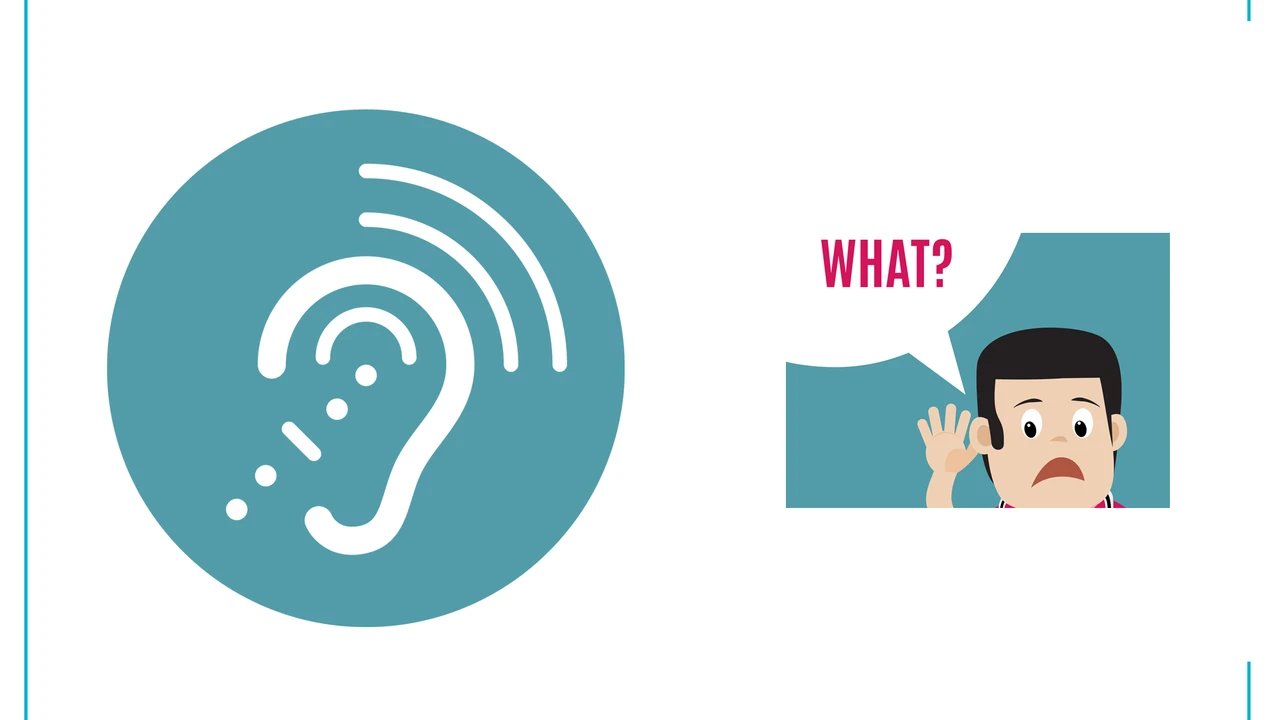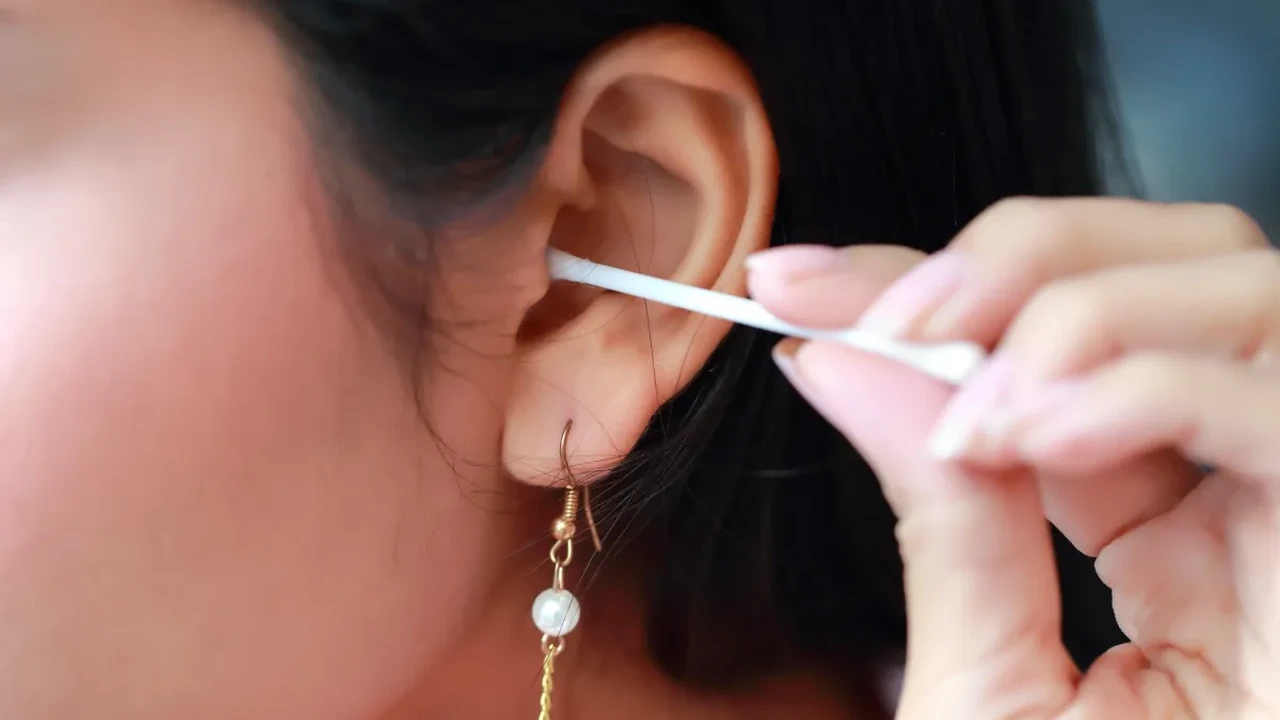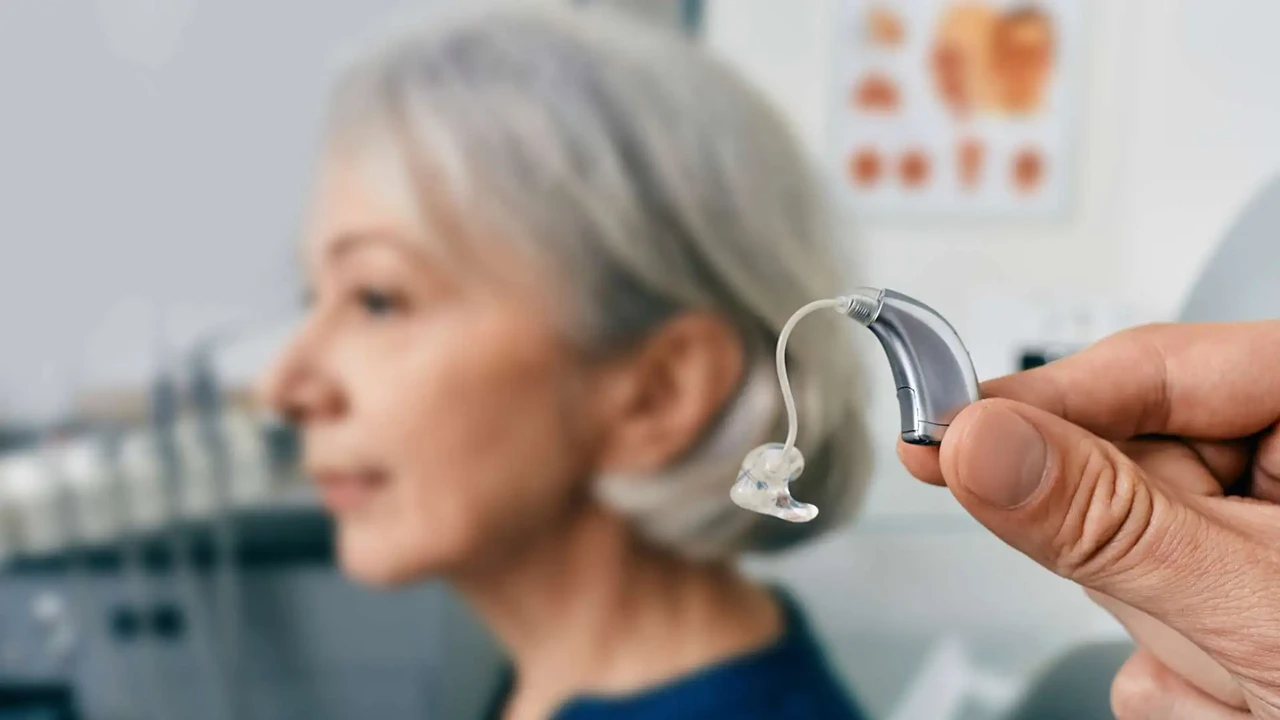Hearing Loss and Balance Issues The Connection
Discover the link between hearing loss and balance problems. Learn how impaired hearing can affect spatial awareness and increase fall risk.

Hearing Loss and Balance Issues The Connection
Hey there! Let's chat about something super important that many folks don't realize is connected: your hearing and your balance. You might think, 'What do my ears have to do with staying upright?' Well, quite a lot, actually! It's not just about hearing sounds; your inner ear plays a massive role in how you perceive your body's position and movement in space. When your hearing starts to falter, it can throw your whole equilibrium off, making you feel wobbly, increasing your risk of falls, and generally making everyday life a bit more challenging. We're going to dive deep into this connection, explore why it happens, and most importantly, what you can do about it. So, buckle up, and let's get started!
The Inner Ear A Dual Purpose Organ for Hearing and Balance
Okay, let's start with the star of the show: your inner ear. It's a tiny, intricate marvel of engineering, tucked away deep inside your head. Most people know it's crucial for hearing, but it's also home to your vestibular system, which is essentially your body's built-in gyroscope. This system is made up of three semicircular canals and two otolith organs (the utricle and saccule). These structures are filled with fluid and tiny hair cells that detect head movements and gravity. When you move your head, the fluid shifts, bending these hair cells, which then send signals to your brain. Your brain processes these signals, along with information from your eyes and your body's proprioceptors (sensors in your muscles and joints), to give you a complete picture of where you are in space and how you're moving. Pretty cool, right?
Now, here's where hearing comes into play. The cochlea, the snail-shaped part of your inner ear responsible for hearing, is right next door to these balance organs. They share the same fluid (endolymph) and are often affected by similar conditions or issues. So, if something is impacting your hearing, there's a good chance it might be messing with your balance system too. It's like having two best friends living in the same house – if one gets sick, the other often feels it too.
How Hearing Loss Directly Impacts Your Balance and Spatial Awareness
So, how exactly does hearing loss mess with your balance? It's not always as straightforward as you might think, but there are several key ways:
Reduced Auditory Cues and Environmental Awareness
Imagine walking down a busy street. You're not just relying on your eyes to navigate; your ears are constantly feeding you information. You hear the approaching car, the footsteps behind you, the rustle of leaves, or the distant siren. These auditory cues help you build a mental map of your surroundings, anticipate potential hazards, and adjust your movements accordingly. When you have hearing loss, these cues become muffled, distorted, or completely absent. This means you're missing out on vital information that helps you orient yourself and react to your environment. You might not hear someone approaching from behind, leading to a sudden startle and loss of balance. Or you might misjudge the distance of a moving object because you can't hear its sound clearly. This reduced environmental awareness can make you feel less secure and more prone to stumbling or falling.
Increased Cognitive Load and Mental Fatigue
Here's another big one: cognitive load. When you have hearing loss, your brain has to work much harder to process what little sound information it receives. It's constantly trying to fill in the gaps, guess what's being said, and make sense of a noisy world. This extra mental effort is called increased cognitive load. Think of it like trying to solve a complex puzzle with half the pieces missing – it's exhausting! This cognitive overload can divert resources away from other important tasks, like maintaining balance. Your brain is so busy trying to hear that it has less capacity to dedicate to processing vestibular and proprioceptive information. This can lead to slower reaction times, reduced spatial awareness, and a higher risk of losing your footing, especially in challenging environments or when multitasking.
Vestibular System Damage and Inner Ear Disorders
Sometimes, the connection is even more direct. Certain conditions that cause hearing loss can also directly damage your vestibular system. Meniere's disease, for example, is a classic culprit. It affects the fluid balance in your inner ear, leading to fluctuating hearing loss, tinnitus, a feeling of fullness in the ear, and severe, debilitating vertigo attacks. Other conditions like labyrinthitis or vestibular neuritis, often caused by viral infections, can also lead to sudden hearing loss and intense dizziness or imbalance. Even some ototoxic medications (drugs that can damage the ear) can affect both hearing and balance. In these cases, the damage to the balance organs is a primary cause of the instability, often alongside the hearing impairment.
Reduced Proprioception and Body Awareness
While not a direct cause, hearing loss can indirectly affect your proprioception – your body's sense of its own position and movement. When you can't hear well, you might become less aware of subtle shifts in your body's weight or movement, especially if you're relying more heavily on visual cues. This can be particularly true in low-light conditions or when your eyes are otherwise occupied. The brain integrates all sensory input to maintain balance, and when one input (auditory) is diminished, the overall system can become less robust.
The Alarming Statistics Hearing Loss and Fall Risk
This isn't just theoretical; the statistics are pretty stark. Research has consistently shown a strong correlation between hearing loss and an increased risk of falls, especially in older adults. One study, for instance, found that for every 10-decibel increase in hearing loss, the risk of falling increased by 1.4 times. That's a significant jump! Another study highlighted that even mild hearing loss can nearly triple the risk of an accidental fall. These aren't just minor tumbles; falls can lead to serious injuries like hip fractures, head trauma, and even a loss of independence. The fear of falling itself can also lead to reduced physical activity and social isolation, creating a vicious cycle that further impacts overall health and well-being.
It's a wake-up call that hearing loss isn't just about communication; it's a public health issue with far-reaching implications for physical safety and quality of life.
Recognizing the Signs When to Seek Help for Balance Issues
So, how do you know if your balance issues might be linked to your hearing? Here are some signs to look out for:
- Frequent Dizziness or Vertigo: This is a big one. If you often feel lightheaded, unsteady, or like the room is spinning, it's definitely time to get checked out.
- Unexplained Falls or Stumbles: If you're tripping or falling more often than usual, especially without a clear obstacle, your balance system might be struggling.
- Difficulty Walking in the Dark or on Uneven Surfaces: When visual cues are limited, your other senses, including hearing and vestibular input, become even more critical for balance.
- Feeling Unsteady When Turning Your Head Quickly: This can be a sign that your vestibular system isn't processing rapid movements effectively.
- Relying Heavily on Walls or Furniture for Support: If you find yourself constantly reaching out for support, it indicates a lack of confidence in your balance.
- Changes in Hearing: Of course, if you're also noticing difficulty hearing conversations, needing to turn up the TV volume, or experiencing tinnitus, these are clear indicators that your hearing might be involved.
If you're experiencing any of these symptoms, don't just brush them off. It's crucial to talk to a healthcare professional. Start with your primary care doctor, who can then refer you to specialists like an audiologist or an ENT (Ear, Nose, and Throat) doctor.
The Role of Audiologists and ENTs in Diagnosing Balance Disorders
When you seek help, you'll likely encounter an audiologist and/or an ENT. An audiologist is a healthcare professional specializing in diagnosing, treating, and managing hearing and balance disorders. They can perform a comprehensive battery of tests to assess your hearing and the function of your vestibular system. These tests might include:
- Audiometry: To measure your hearing thresholds.
- Tympanometry: To check the function of your middle ear.
- Otoacoustic Emissions (OAEs): To assess the function of your inner ear hair cells.
- Videonystagmography (VNG) or Electronystagmography (ENG): These tests measure eye movements to assess the function of your vestibular system.
- Rotary Chair Test: To evaluate how your balance system responds to rotational movements.
- Vestibular Evoked Myogenic Potentials (VEMPs): To assess the function of specific parts of your vestibular system.
- Posturography: To measure your ability to maintain balance under various conditions.
An ENT (Otolaryngologist) is a medical doctor who specializes in conditions of the ear, nose, and throat. They can diagnose and treat medical conditions affecting the inner ear, including infections, Meniere's disease, and other vestibular disorders. Often, an audiologist and an ENT will work together to get a complete picture of your condition and develop the best treatment plan.
Hearing Aids A Surprising Solution for Balance Improvement
Now for the good news! If your balance issues are linked to hearing loss, hearing aids can often make a significant difference. It might sound counterintuitive, but by restoring auditory input, hearing aids can help in several ways:
Enhanced Environmental Awareness and Auditory Cues
By amplifying sounds, hearing aids help you regain those crucial auditory cues we talked about earlier. You'll be more aware of your surroundings, hear approaching vehicles, footsteps, and other environmental sounds that help you orient yourself. This improved awareness can make you feel more secure and confident when moving around, especially in unfamiliar or challenging environments.
Reduced Cognitive Load and Improved Brain Processing
When your brain doesn't have to strain to hear, it frees up cognitive resources. This means more brainpower can be dedicated to maintaining balance, processing visual and proprioceptive information, and reacting quickly to changes in your environment. Essentially, hearing aids take some of the burden off your brain, allowing it to perform its balance-keeping duties more effectively. This can lead to better stability, quicker reaction times, and a reduced risk of falls.
Improved Spatial Orientation and Sound Localization
Hearing aids, especially modern ones with advanced processing, can help improve your ability to localize sounds – that is, to tell where a sound is coming from. This spatial awareness is incredibly important for balance. If you can accurately pinpoint the source of a sound, it helps your brain create a more precise mental map of your environment, which in turn aids in maintaining equilibrium.
Top Hearing Aid Products for Balance Support and Enhanced Hearing
When it comes to choosing hearing aids that can help with balance, you'll want to look for devices that offer excellent sound processing, good noise reduction, and features that enhance spatial awareness. Here are a few top contenders, keeping in mind that the 'best' device is always the one that's professionally fitted and programmed for your specific needs:
1. Phonak Audéo Lumity L90-R
Key Features: The Lumity series from Phonak is renowned for its exceptional speech understanding in noise and its focus on spatial awareness. The L90-R model is their top-tier rechargeable RIC (Receiver-In-Canal) device. It features their 'StereoZoom 2.0' and 'SpeechSensor' technologies, which are fantastic for focusing on speech from various directions and reducing background noise. This directly contributes to better environmental awareness and reduced cognitive load. It also boasts universal Bluetooth connectivity, allowing seamless streaming from multiple devices.
Use Cases: Excellent for active individuals who frequently find themselves in complex listening environments like busy restaurants, social gatherings, or outdoor activities where spatial awareness is key. The robust noise reduction helps reduce mental fatigue, leaving more cognitive resources for balance.
Comparison: Compared to older models, the Lumity offers a significant leap in speech clarity and spatial processing. Its rechargeable battery is a huge convenience. It's often considered a benchmark for performance in challenging environments.
Estimated Price Range: $3,000 - $7,000 per pair, depending on the provider, services included, and location.
2. Oticon Real 1 miniRITE R
Key Features: Oticon's 'MoreSound Intelligence 2.0' and 'MoreSound Amplifier 2.0' in the Real series are designed to provide a more natural, 360-degree soundscape. Instead of just focusing on sounds in front, it processes all sounds around you, then uses a deep neural network to prioritize speech and reduce distracting noise. This 'open sound' approach is excellent for maintaining environmental awareness, which is crucial for balance. It also includes a 'SuddenSound Stabilizer' to handle unexpected loud noises without discomfort.
Use Cases: Ideal for users who value a natural sound experience and want to stay connected to their surroundings without feeling isolated. Great for navigating dynamic environments where sounds come from all directions, helping with spatial orientation.
Comparison: Oticon's philosophy differs from some competitors by aiming for a more complete sound picture rather than aggressive noise suppression. This can be beneficial for balance as it provides more auditory cues. It's a strong contender for those seeking a natural listening experience.
Estimated Price Range: $2,800 - $6,500 per pair, depending on the provider, services included, and location.
3. ReSound OMNIA 9 RIC 61
Key Features: The ReSound OMNIA focuses heavily on 'all-around hearing' and improving speech understanding in noise. Its 'Ultra Focus' and '360 All Around' features allow users to choose between focusing on sounds directly in front or having a broader soundscape. The 'M&RIE' (Microphone & Receiver-In-Ear) option uses a microphone placed in the ear canal, leveraging the natural shape of your ear for better sound localization and a more natural sound experience, which is a huge plus for spatial awareness and balance.
Use Cases: Excellent for individuals who need flexibility in their listening environments, from quiet conversations to very noisy settings. The M&RIE option is particularly beneficial for those seeking enhanced sound localization and a more natural perception of their surroundings, directly aiding balance.
Comparison: ReSound's M&RIE technology is a unique selling point that can offer a more natural sound experience than traditional RICs, potentially leading to better spatial awareness. The OMNIA also offers robust connectivity and a comfortable fit.
Estimated Price Range: $2,900 - $6,800 per pair, depending on the provider, services included, and location.
4. Starkey Genesis AI RIC RT
Key Features: Starkey's Genesis AI is packed with artificial intelligence, offering advanced sound processing and personalized features. Its 'Neuro Sound Technology' is designed to mimic the brain's natural processing, providing clearer speech and a more natural sound environment. Crucially for balance, it includes a 'Fall Alert' feature that can detect if you've fallen and send an alert to pre-selected contacts. While not directly improving balance, it offers a significant safety net.
Use Cases: Great for users who want cutting-edge technology and smart features. The fall alert is a standout for older adults or those with a higher fall risk, providing peace of mind. The AI-driven sound processing also aims to reduce listening effort, freeing up cognitive resources.
Comparison: The Genesis AI stands out with its integrated AI and health-tracking features, including the fall alert. Its sound processing is highly adaptive, aiming to provide optimal clarity in various situations, which indirectly supports balance by reducing listening strain.
Estimated Price Range: $3,200 - $7,500 per pair, depending on the provider, services included, and location.
5. Widex Moment Sheer 440 sRIC R D
Key Features: Widex is known for its natural sound quality, and the Moment Sheer series takes this a step further with 'PureSound' technology, which aims to eliminate the artificial sound delay often associated with hearing aids. This results in a more immediate and natural sound experience. A natural sound is less fatiguing and can contribute to better environmental awareness. It also offers excellent sound localization and a comfortable fit.
Use Cases: Ideal for individuals who are sensitive to the 'hearing aid sound' and desire the most natural auditory experience possible. This naturalness can reduce cognitive strain and improve overall comfort, indirectly supporting balance by allowing the brain to focus on other tasks.
Comparison: Widex's PureSound is a unique feature that sets it apart, offering a very natural and immediate sound. This can be particularly beneficial for new users or those who find other hearing aids sound artificial. Its focus on natural sound contributes to a less fatiguing listening experience.
Estimated Price Range: $2,700 - $6,200 per pair, depending on the provider, services included, and location.
Important Note on Pricing: The prices listed are estimates and can vary significantly. They typically include the devices themselves, professional fitting, follow-up appointments, adjustments, and a warranty. Always get a detailed quote from your audiologist, as services and packages differ.
Beyond Hearing Aids Other Strategies for Improving Balance
While hearing aids can be a game-changer, they're often part of a broader strategy to improve balance. Here are some other things you can do:
Vestibular Rehabilitation Therapy VRT
If you have a diagnosed vestibular disorder, a physical therapist specializing in vestibular rehabilitation can be incredibly helpful. VRT involves a series of exercises designed to retrain your brain to process balance information correctly. These exercises might include eye and head movements, balance training, and habituation exercises to reduce dizziness. It's like physical therapy for your inner ear and brain!
Regular Exercise and Strength Training
Staying physically active is crucial for maintaining good balance. Exercises that improve strength, flexibility, and coordination can significantly reduce your fall risk. Think about activities like:
- Tai Chi or Yoga: These practices are excellent for improving balance, flexibility, and body awareness.
- Walking: Regular walking, especially on varied surfaces, helps strengthen your legs and improve proprioception.
- Strength Training: Strong leg and core muscles are essential for stability.
- Balance Exercises: Simple exercises like standing on one leg, heel-to-toe walking, or using a balance board can make a big difference.
Home Safety Modifications
Making your home safer can prevent falls, regardless of the underlying cause of balance issues. Consider:
- Removing tripping hazards: Get rid of loose rugs, clutter, and electrical cords.
- Improving lighting: Ensure all areas are well-lit, especially staircases and hallways.
- Installing grab bars: In bathrooms and near stairs, grab bars provide crucial support.
- Using non-slip mats: In showers and bathtubs.
- Wearing appropriate footwear: Shoes with good support and non-slip soles are important.
Medication Review and Management
Some medications can cause dizziness or affect balance as a side effect. Talk to your doctor or pharmacist about all the medications you're taking, including over-the-counter drugs and supplements. They might be able to adjust dosages or suggest alternatives if a medication is contributing to your balance problems.
Hydration and Diet
Believe it or not, dehydration can sometimes contribute to dizziness and lightheadedness. Make sure you're drinking enough water throughout the day. A balanced diet rich in nutrients also supports overall health, including the health of your inner ear.
The Takeaway Don't Ignore the Connection
The link between hearing loss and balance issues is real and significant. It's not just about missing out on conversations; it's about your physical safety, your independence, and your overall quality of life. If you're experiencing hearing loss and also find yourself feeling unsteady, dizzy, or falling more often, please don't hesitate to seek professional help. An audiologist can assess your hearing and, if appropriate, recommend hearing aids that can not only improve your ability to hear but also significantly enhance your balance and reduce your risk of falls. Combine that with other strategies like exercise and home safety, and you'll be well on your way to a more stable and confident life. Your ears and your balance are more connected than you think, and taking care of one often means taking care of the other!
:max_bytes(150000):strip_icc()/277019-baked-pork-chops-with-cream-of-mushroom-soup-DDMFS-beauty-4x3-BG-7505-5762b731cf30447d9cbbbbbf387beafa.jpg)






